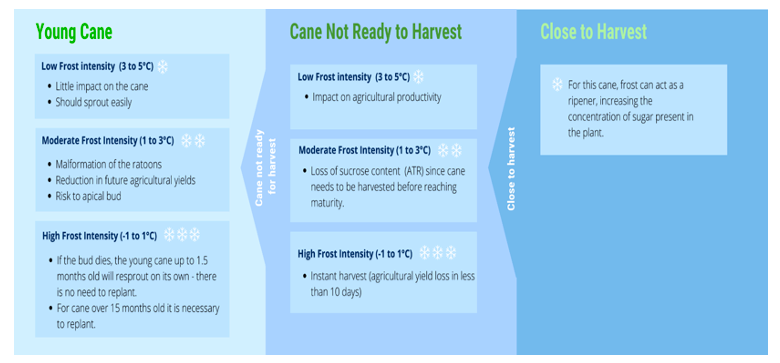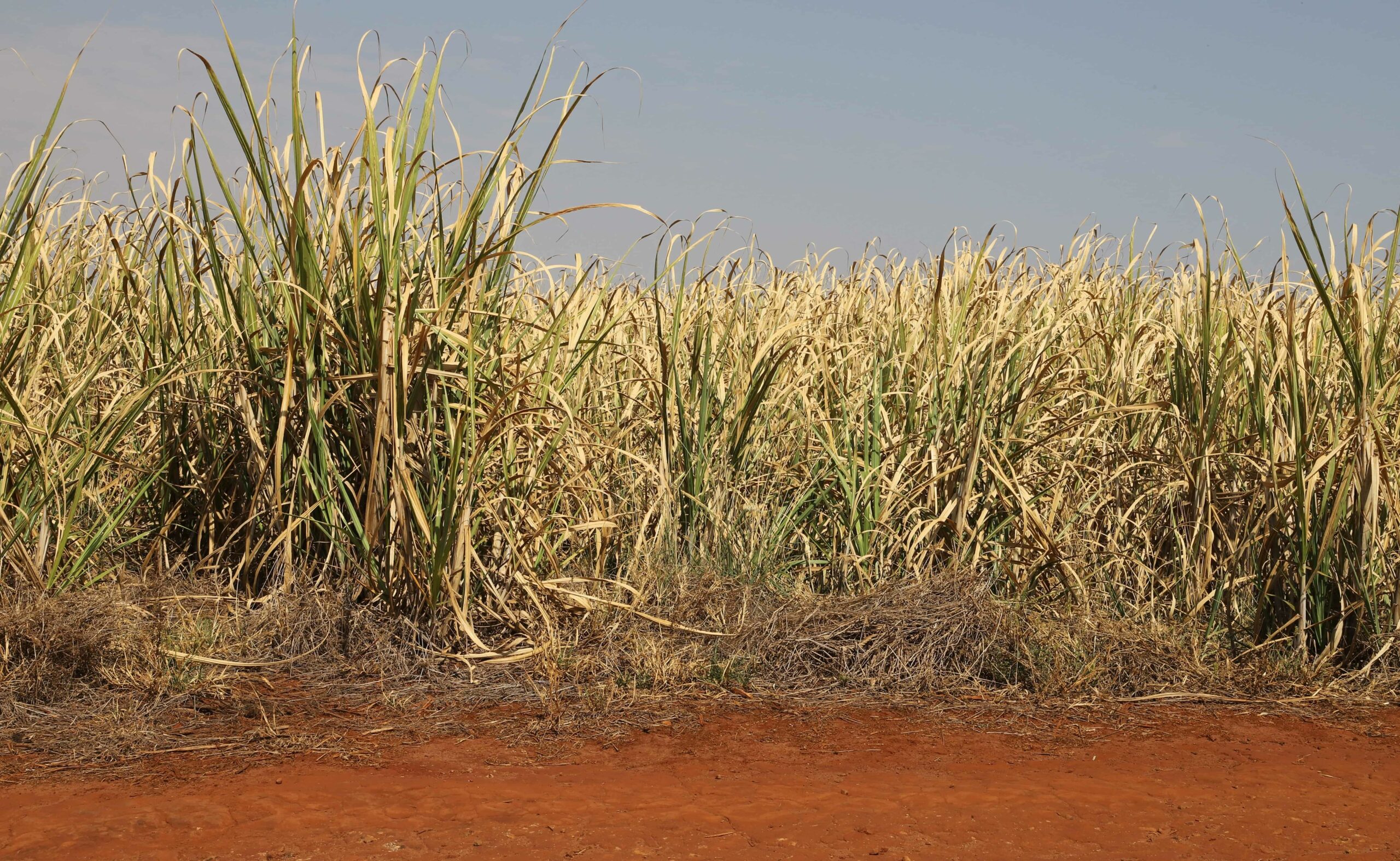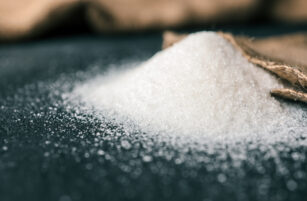Insight Focus
- No major damage reported from last week’s frost.
- Drought, frost in 2021 cut cane yield, ATR.
- The Effect of Any Frost Depends on Proximity to Harvest
Last week, the sugar market fretted about the risk of frost in Centre-South Brazil. However, the cold front lost strength on 21st May, and the weather has been turning milder this week. Producers have not reported any major damage, but a full assessment has yet to be made.
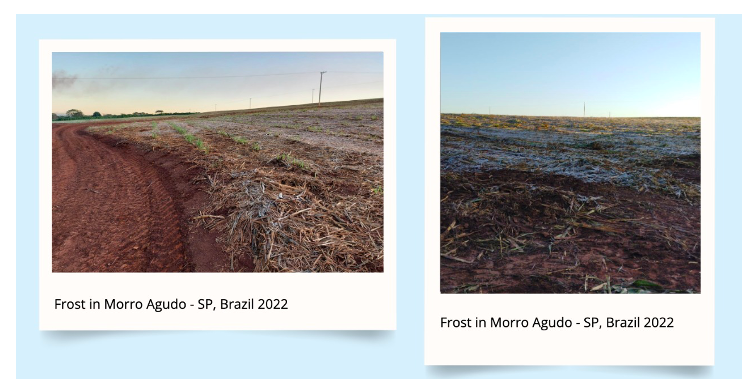
What Was the Impact of Frost in 2021?
Despite sugarcane being resilient to adverse weather, last year challenged it to the utmost. January-March rainfall, the most essential to the cane’s development, was 38% below average — the driest in 10 years.
To make matters worse, the weather remained dry and the cumulative rainfall in April-July was 61% below average for the CS region – another 10-year low. Concern grew when frost hit in June and July. With millers and farmers calling it the worst they had seen in 10 years.
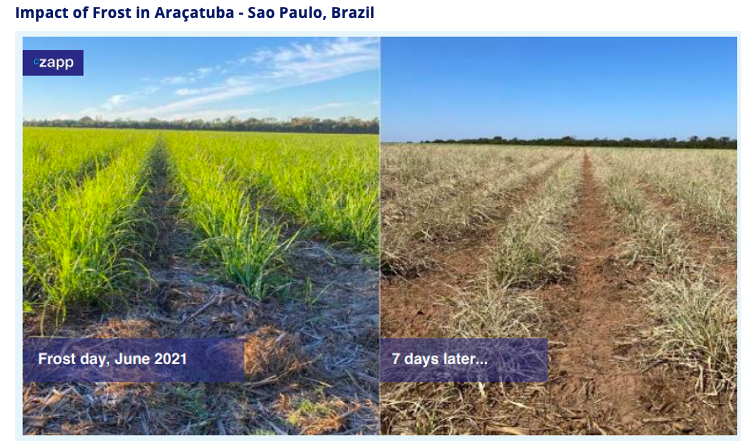
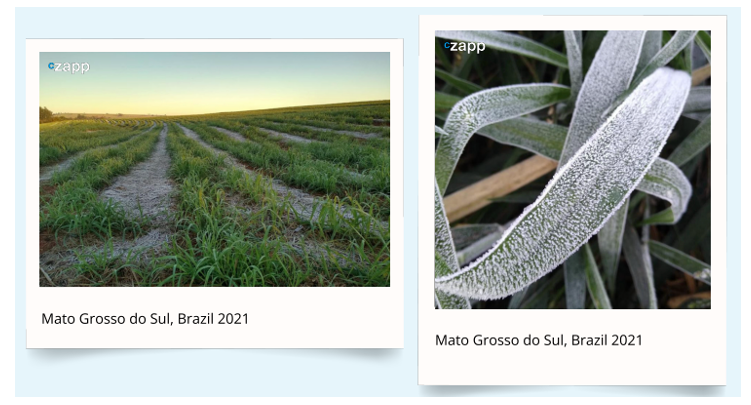
The combination of drought and frost caused a drop in agricultural yield. The fields affected by frost had to be harvested early, which reduced the cane’s sucrose content (ATR). The photos taken last year in two CS regions: show the same field with frost, and a week later the cane leaves were burnt by the cold. Since cane was at an early stage of development, it was able to resprout and but its growth was delayed. In Mato Grosso do Sul as well, the frost over the same period hit young cane, mainly affecting the leaves rather than the apical bud.
What about 2020?
In 2020, the news and social media were full of images of snow in Brazil. However, it only fell in the south, where there is no cane production.

In case you are wondering: What does cane affected by frost looks like?
These pictures where taken in 2019 (end of July) during one of our crop tours in Mato Grosso do Sul state, where frost occurred.
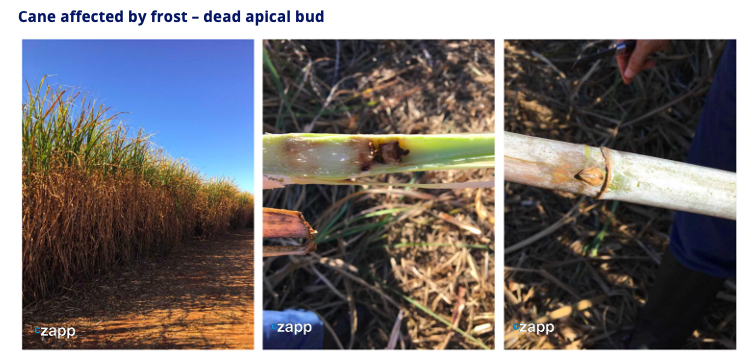
In the case above, the cane in the area affected was in its 10th month of its development, i.e. not fully developed. The most damage is caused if the apical ud dies, as shown in the second image.
After the apical bud dies, the cane will start sprouting sideways. If this happens close to harvesting the loss of agricultural yield might not be that significant. However, the mills must act quickly to prevent a fall in the ATR because the plant might start sprouting on the side and use up sucrose to do so.
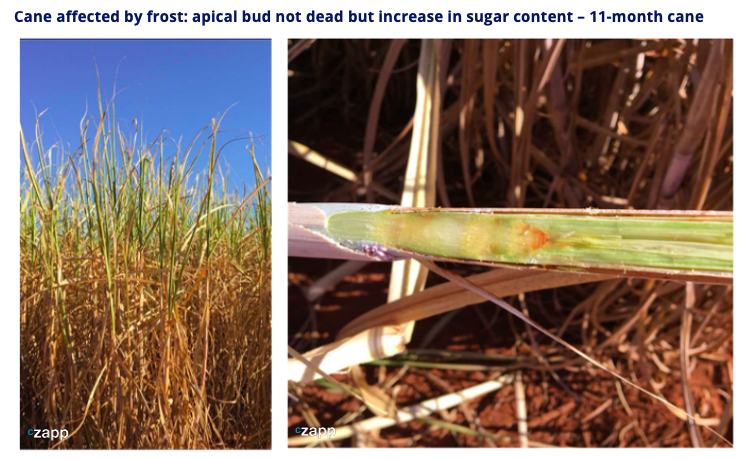
Even though the cane above does not look that healthy, this area was less affected. When the cane is cut open, we can see that the apical bud is not dead and that its colouration denotes an increase in sugar content – in this case the frost speeded up maturation.
If there is a frost close to harvesting it is beneficial; if not, then this cane will still be able to gain mass and develop further.
